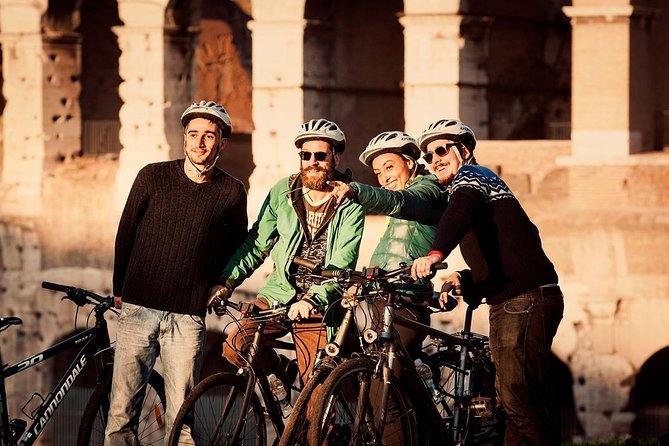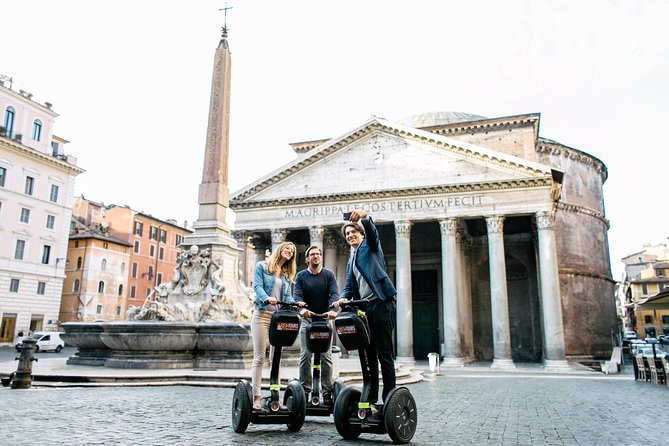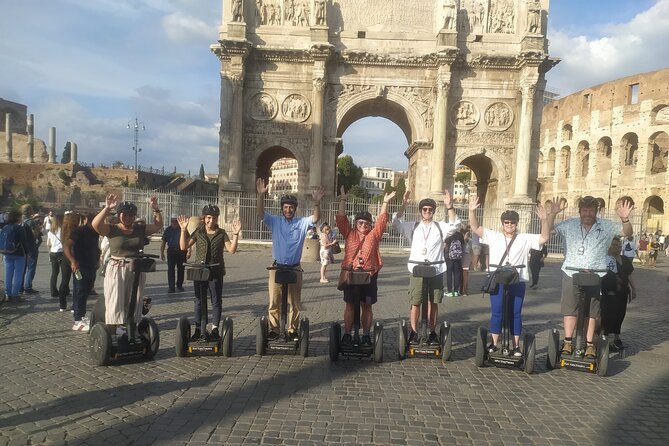The Theatre of Marcellus (Latin: Theatrum Marcelli, Italian: Teatro di Marcello) is an ancient open-air theatre in Rome, Italy, built in the closing years of the Roman Republic. At the theatre, locals and visitors alike were able to watch performances of drama and song. Today its ancient edifice in the rione of Sant'Angelo, Rome, once again provides one of the city's many popular spectacles or tourist sites. Space for the theatre was cleared by Julius Caesar, who was murdered before its construction could begin; the theatre was advanced enough by 17 BC that part of the celebration of the ludi saeculares took place within the theatre; it was completed in 13 BC and formally inaugurated in 12 BC by Augustus, named after his nephew Marcus Claudius Marcellus who had died in 23 BC. The theatre was 111 m in diameter and was the largest and most important theatre in Ancient Rome; it could originally hold between 11,000 and 20,000 spectators. It was an impressive example of what was to become one of the most pervasive urban architectural forms of the Roman world. The theatre was built mainly of tuff, and concrete faced with stones in the pattern known as opus reticulatum, completely sheathed in white travertine. However, it is also the earliest dateable building in Rome to make use of fired Roman brick, then a new introduction from the Greek world. The network of arches, corridors, tunnels and ramps that gave access to the interiors of such Roman theatres were normally ornamented with a screen of engaged columns in Greek orders: Doric at the base, Ionic in the middle. It is believed that Corinthian columns were used for the upper level but this is uncertain as the theatre was reconstructed in the Middle Ages, removing the top tier of seating and the columns. Like other Roman theatres in suitable locations, it had openings through which the natural setting could be seen, in this case the Tiber Island to the southwest. The permanent setting, the scaena, also rose to the top of the cavea as in other Roman theatres. The theatre fell out of use in the early 4th century and the structure served as a quarry, e.g., the Pons Cestius in 370 AD. However, the statues located inside the building were restored by Petronius Maximus in 421 and the remaining structure still housed small residential buildings. In the Early Middle Ages the theatre was used as a fortress of the Fabii and then at the end of the 11th century (when it was known as templum Marcelli), by Pier Leoni and later his heirs (the Pierleoni). This saved the complex from further destruction. The Savelli held it in the 13th century. Later, in the 16th century, the residence of the Orsini, designed by Baldassare Peruzzi, was built atop the ruins of the ancient theatre. By the 19th century, rises in the street level meant that almost half the ground floor was below it. Now the upper floors are divided into multiple apartments, and its surroundings are used as a venue for small summer concerts; the Portico d'Ottavia lies to the north west leading to the Roman Ghetto and the Tiber t the south west. In the 17th century, the English architect Sir Christopher Wren explicitly acknowledged that his design for the Sheldonian Theatre in Oxford was influenced by Serlio's engraving of the Theatre of Marcellus.

Theater of Marcellus (Teatro di Marcello) Tours and Tickets
🎧 Available audio guides (15)
The Theatre of Marcellus (Latin: Theatrum Marcelli, Italian: Teatro di Marcello) is an ancient open-air theatre in Rome, Italy, built in the closing years of the Roman Republic. At the theatre, locals and visitors alike were able to watch performances of drama and song. Today its ancient edifice in the rione of Sant'Angelo, Rome, once again provides one of the city's many popular spectacles or tourist sites. Space for the theatre was cleared by Julius Caesar, who was murdered before its construction could begin; the theatre was advanced enough by 17 BC that part of the celebration of the ludi saeculares took place within the theatre; it was completed in 13 BC and formally inaugurated in 12 BC by Augustus, named after his nephew Marcus Claudius Marcellus who had died in 23 BC. The theatre was 111 m in diameter and was the largest and most important theatre in Ancient Rome; it could originally hold between 11,000 and 20,000 spectators. It was an impressive example of what was to become one of the most pervasive urban architectural forms of the Roman world. The theatre was built mainly of tuff, and concrete faced with stones in the pattern known as opus reticulatum, completely sheathed in white travertine. However, it is also the earliest dateable building in Rome to make use of fired Roman brick, then a new introduction from the Greek world. The network of arches, corridors, tunnels and ramps that gave access to the interiors of such Roman theatres were normally ornamented with a screen of engaged columns in Greek orders: Doric at the base, Ionic in the middle. It is believed that Corinthian columns were used for the upper level but this is uncertain as the theatre was reconstructed in the Middle Ages, removing the top tier of seating and the columns. Like other Roman theatres in suitable locations, it had openings through which the natural setting could be seen, in this case the Tiber Island to the southwest. The permanent setting, the scaena, also rose to the top of the cavea as in other Roman theatres. The theatre fell out of use in the early 4th century and the structure served as a quarry, e.g., the Pons Cestius in 370 AD. However, the statues located inside the building were restored by Petronius Maximus in 421 and the remaining structure still housed small residential buildings. In the Early Middle Ages the theatre was used as a fortress of the Fabii and then at the end of the 11th century (when it was known as templum Marcelli), by Pier Leoni and later his heirs (the Pierleoni). This saved the complex from further destruction. The Savelli held it in the 13th century. Later, in the 16th century, the residence of the Orsini, designed by Baldassare Peruzzi, was built atop the ruins of the ancient theatre. By the 19th century, rises in the street level meant that almost half the ground floor was below it. Now the upper floors are divided into multiple apartments, and its surroundings are used as a venue for small summer concerts; the Portico d'Ottavia lies to the north west leading to the Roman Ghetto and the Tiber t the south west. In the 17th century, the English architect Sir Christopher Wren explicitly acknowledged that his design for the Sheldonian Theatre in Oxford was influenced by Serlio's engraving of the Theatre of Marcellus.
Overview
More Info
- Most of Rome’s archaeological sites are open-air, so wear a hat, sunscreen, and comfortable shoes on an ancient Rome tour.
- A visit to the theater is especially fascinating for Roman history enthusiasts.
- Due to the uneven and unpaved grounds, the outdoor site is not accessible to wheelchair users.
- The theater is no longer used as a venue, but small concerts are held on grounds with the structure as a backdrop.
More Adventures for You
0$
0$
3000$

Likely to Sell Out
Price From
1.00 USD
Join this tour and enjoy the ultimate blend of many of Rome’s most famous landmarks and some of its lesser-known but magical sights. On a Cannondale E-Bike and in the company of a professional guide discover Rome with one of the two routes: MORNING or AFTERNOON itinerary, each especially designed to give you the best cycling discovery of the city depending on the time of day. Highlights of each itinerary: MORNING ITINERARY Colosseum Imperial Forums Piazza Venezia and Vittoriano monument Trevi Fountain Spanish Steps Piazza del Popolo Park of Villa Borghese and scenic view of Rome Piazza Navona Pantheon Jewish ghetto and Portico di Ottavia Theatre of Marcellus Panoramic view of the Roman Forum AFTERNOON ITINERARY Colosseum Circus Maximus and view on the Palatine Hill Garden or Oranges Trastevere Santa Maria in Trastevere Piazza Farnese Campo de' Fiori Piazza Navona Pantheon Jewish ghetto and Portico di Ottavia Theatre of Marcellus Panoramic view of the Roman Forum_en-US
Learn More
Price From
1.00 USD
Join us for an exclusive, complete and safety-conscious tour of Rome by quality Cannondale E-Bike! Anti-puncture tires and comfortable saddles included on our smooth 2023 E-Bike models. Discover Rome at your own pace, and soak in your guide's undivided attention, as you follow a proposed itinerary that combines top sights with lesser-known corners, gardens (such as Villa Borghese) and alleyways - for an engaging and active way to enjoy the best of the Eternal City. With a knowledgeable guide, you’ll cycle past ancient landmarks like the Pantheon, admire chic shopping streets, check out bustling squares like Piazza Navona and see beautiful churches. Note: when booking, please insert the number and age of any children in the field Special Requirements, in order that we adequately prepare for your tour._en-US
Learn More


Price From
$154.31 USD
OUR TOURS : 1️⃣ 4h Golf Cart Tour 2️⃣ 6h Full Experience 3️⃣ Sunset Tour 4️⃣ Golf Cart + Vatican Museums 5️⃣ 3h with Wine Tasting or Artisanal Gelato 6️⃣ Street Food by Golf Cart Review : ⭐⭐⭐⭐⭐ EXPLORE ROME BY GOLF CART WITH A LOCAL GUIDE Let yourself be carried through the Eternal City in total comfort! Rome is full of history, culture, and beauty. But with so much to see and long distances, exploring on foot can be exhausting. We have the solution. Our tours make your visit fun and effortless. Whether you're a couple, a family, or a solo traveler, our local guides will take you through Rome’s most iconic and hidden spots, sharing fascinating stories along the way. We’ll stop for photos and — depending on the tour — enjoy a break for : Artisanal ice cream (1947 recipe) OR A glass of wine with Italian snacks and a panoramic view ✅ Pickup on request (1 day in advance) ✅ Max 2 custom stops ✅ Eco-friendly & family-friendly Buckle up — Rome is Waiting! _en-US
Learn More

Access for Seniors
- Recommended time for visit 1 hour
- Recommended time for visit 2 hours
- Physical difficulty level - 3
Accessibility for wheels
- Special Parking
- Access with Portable Ramp
- Wide doors >= 75 cm and < 90 cm
Access for Visually Impaired
- Audio Guide
- Place has Special Guide Service
- Service animals permitted
Welcome to the Theater of Marcellus, a place where history comes alive, and where the past whispers its secrets to those who listen closely. As you stand at the entrance of this ancient amphitheater, close your eyes and let your senses guide you on an emotional journey of visitation.
Feel the warmth of the sun on your skin as it dances through the stone archways, casting a golden glow over the weathered ruins. The sound of your footsteps echoes off the 2,000-year-old walls, a reminder of the countless souls who have walked these same paths before you.
As you explore the massive structure, run your fingers along the rough texture of the ancient stones, each groove and crevice telling a story of a time long gone. Imagine the roar of the crowds, the clashing of swords, and the thunderous applause that once filled this grand amphitheater.
Take a moment to sit on one of the weathered seats, closing your eyes and letting your mind wander back in time. Picture the actors and musicians who once graced this stage, their voices filling the air with music and drama. Feel the excitement and anticipation of the audience, their cheers and laughter reverberating through the air.
In this moment of solitude, let the history of the Theater of Marcellus wash over you, filling you with a sense of awe and wonder. Reflect on the passage of time, the rise and fall of civilizations, and the eternal beauty of art and architecture.
As you make your way back towards the entrance, take one last look at this breathtaking place, committing its beauty to memory. Remember that you have walked in the footsteps of emperors and gladiators, poets and philosophers, and that their legacy lives on in the stones beneath your feet.
The Theater of Marcellus invites you to pause, to reflect, and to connect with the rich tapestry of human experience. May your visit be filled with emotion, inspiration, and a deep appreciation for the enduring power of history and culture.
The Theater of Marcellus (Teatro di Marcello) in Rome does not currently offer official audio descriptive guides or sensory-friendly hours. However, visitors with accessibility needs are encouraged to contact the site directly to inquire about any accommodations that may be available, as options may vary depending on the availability of resources and staff.
As a historic and iconic landmark in Rome, the Theater of Marcellus holds a special place in the hearts of locals. We spoke to a few writers and artists to get their insights and experiences with this ancient amphitheater.
Local artist, Giuseppe, shared with us how the Theater of Marcellus has inspired his artwork. He described the grandeur of the structure and how its imposing presence evokes feelings of awe and respect. Giuseppe often incorporates elements of the theater in his paintings, capturing its unique beauty and timeless appeal.
Renowned writer, Sofia, expressed her deep connection to the Theater of Marcellus through her writing. She described how the ancient ruins serve as a backdrop for her stories, adding an element of mystery and intrigue to her narratives. Sofia finds inspiration in the rich history and architectural splendor of the theater, infusing her writings with a sense of grandeur and sophistication.
Local residents, Luca and Martina, shared their fond memories of visiting the Theater of Marcellus as children. They recalled playing amongst the ruins and imagining themselves as ancient Romans, transported back in time to a bygone era. For Luca and Martina, the theater holds a special place in their childhood memories, sparking a lifelong fascination with history and archaeology.
Overall, the Theater of Marcellus continues to captivate and inspire both locals and visitors alike. Its ancient charm and storied past have left an indelible mark on the cultural landscape of Rome, serving as a testament to the enduring legacy of the city’s rich history.
### Theater of Marcellus (Teatro di Marcello), Rome: Directions and Transportation
The Theater of Marcellus is located in the heart of Rome, making it easily accessible by various modes of transportation. Here are some options you can consider:
- Public Transportation: You can take the metro to the Colosseo station (Line B) or the bus to Piazza Venezia. From there, it’s a short walk to the theater.
- Walking: If you’re in the central area of Rome, you can easily walk to the Theater of Marcellus. It’s close to popular landmarks like the Roman Forum and Piazza Venezia.
- Taxi/Uber: Taxis and ride-sharing services like Uber are readily available in Rome. You can simply input the address of the theater and get dropped off at the nearest point.
- Accessible Transportation: Rome has accessible public transportation options for individuals with mobility challenges. Metro stations and buses are equipped with ramps and elevators for easier access.
### Theater of Marcellus (Teatro di Marcello), Rome: Ticket Booking and Discounts
To visit the Theater of Marcellus, you can book your tickets online in advance or purchase them at the ticket office on the day of your visit. Here are some details to keep in mind:
- Online Booking: Websites like Coopculture or official tourism websites allow you to book tickets in advance. This is recommended during peak tourist seasons to avoid long lines.
- Discounts: Seniors, students, and children often receive discounted tickets. Make sure to carry a valid ID or student card to avail of these discounts.
- Tour Packages: Some tours in Rome include a visit to the Theater of Marcellus. This can be a convenient option if you want a guided tour of multiple Roman landmarks.
### Theater of Marcellus (Teatro di Marcello), Rome: Local Amenities
When visiting the Theater of Marcellus, here are some amenities you can expect to find nearby:
- Parking: There are paid parking lots in the vicinity where you can park your vehicle while visiting the theater. Be mindful of parking restrictions and fees.
- Restrooms: Public restrooms are available at nearby cafes, restaurants, or museums. It’s advisable to use facilities before entering the theater.
- Dining Options: There are several cafes and restaurants around the Theater of Marcellus offering a variety of cuisines. You can find options catering to different dietary needs, including vegetarian and gluten-free.
Plan your visit to the Theater of Marcellus with these comprehensive details on directions, transportation, ticket booking, and local amenities for a hassle-free and enjoyable experience.




